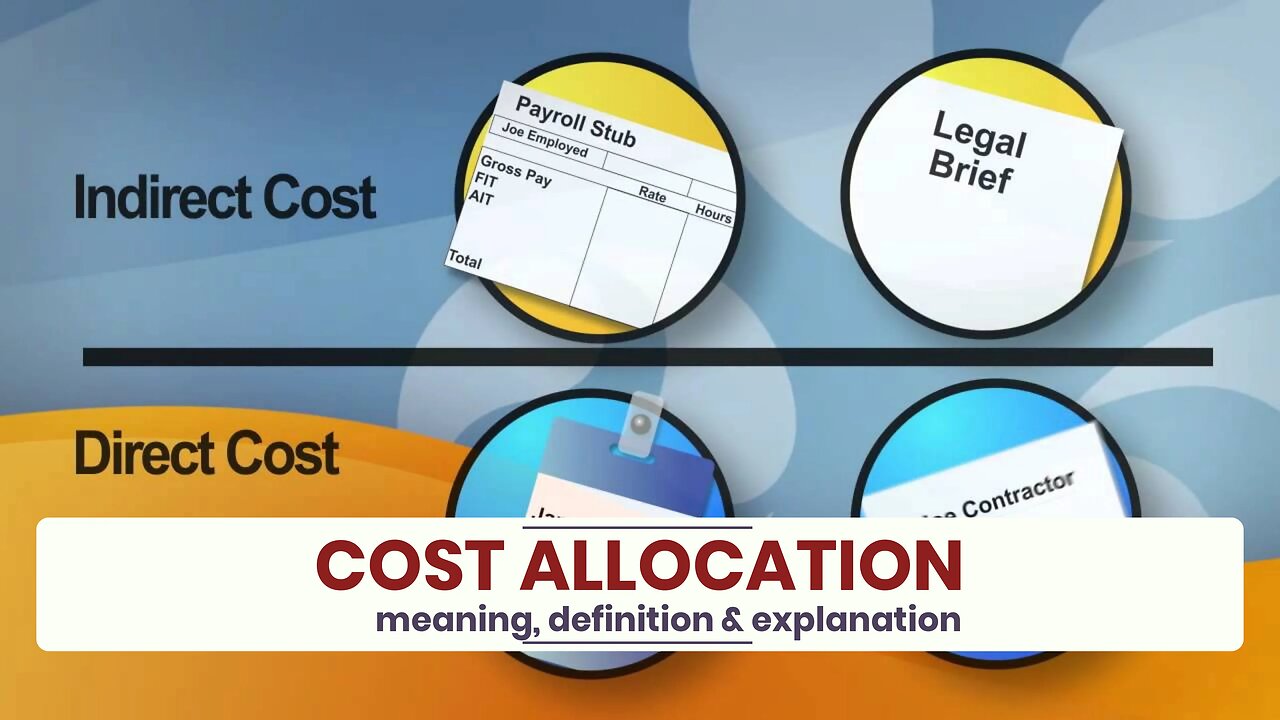Premium Only Content

What is COST ALLOCATION?
✪✪✪✪✪
http://www.theaudiopedia.com
✪✪✪✪✪
What is COST ALLOCATION? What does COST ALLOCATION mean? COST ALLOCATION meaning - COST ALLOCATION definition - COST ALLOCATION explanation. What is the meaning of COST ALLOCATION? What is the definition of COST ALLOCATION? What does COST ALLOCATION stand for? What is COST ALLOCATION meaning? What is COST ALLOCATION definition?
Cost allocation is a process of providing relief to shared service organization's cost centers that provide a product or service. In turn, the associated expense is assigned to internal clients' cost centers that consume the products and services. For example, the CIO may provide all IT services within the company and assign the costs back to the business units that consume each offering.
The core components of a cost allocation system consist of a way to track which organizations provides a product and/or service, the organizations that consume the products and/or services, and a list of portfolio offerings (e.g. service catalog). Depending on the operating structure within a company, the cost allocation data may generate an internal invoice or feed an ERP system's chargeback module. Accessing the data via an invoice or chargeback module are the typical methods that drive personnel behavior. In return, the consumption data becomes a great source of quantitative information to make better business decisions. Today’s organizations face growing pressure to control costs and enable responsible financial management of resources. In this environment, an organization is expected to provide services cost-effectively and deliver business value while operating under tight budgetary constraints. One way to contain costs is to implement a cost allocation methodology, where your business units become directly accountable for the services they consume.
An effective cost allocation methodology enables an organization to identify what services are being provided and what they cost, to allocate costs to business units, and to manage cost recovery. Under this model, both the service provider and its respective consumers become aware of their service requirements and usage and how they directly influence the costs incurred. This information, in turn, improves discipline within the business units and financial discipline across the entire organization. With the organization articulating the costs of services provided, the business units become empowered – and encouraged – to make informed decisions about the services and availability levels they request. They can make trade-offs between service levels and costs, and they can benchmark internal costs against outsourced providers.
-
 2:28
2:28
The Audiopedia
1 year agoWhat is MORTGAGE BROKER?
22 -
 1:39:16
1:39:16
Steven Crowder
5 hours agoJimmy Kimmel & The Left Desperately Want to Gaslight America - Don't Let Them
463K386 -
 LIVE
LIVE
The Shannon Joy Show
3 hours agoFinal Betrayal: Trump’s FBI Director Kash Patel Declares Jeffrey Epstein WASN’T A Sex Trafficker.
401 watching -
 1:35:00
1:35:00
The Mel K Show
3 hours agoMORNINGS WITH MEL K - Who Benefits? Order Out of Chaos & the Hegelian Dialectic 9-17-25
37.8K12 -
 24:23
24:23
Standpoint with Gabe Groisman
2 hours agoUS DOJ's Leo Terrell Says “No University Is Prepared For The Crackdown That’s Coming…”
18K1 -
 59:28
59:28
Grant Stinchfield
3 hours ago $2.45 earnedBombshell Audio Proves FBI Targeted Navarro for One Reason—Politics
35.7K9 -
 LIVE
LIVE
LFA TV
8 hours agoLFA TV ALL DAY STREAM - WEDNESDAY 9/17/25
2,554 watching -
 1:02:21
1:02:21
VINCE
6 hours agoThe Left's Lawfare Onslaught REVEALED | Episode 127 - 09/17/25
266K297 -
 59:53
59:53
The Rubin Report
4 hours agoCNN Reporter Humiliated as Question for Ted Cruz Blew Up in Her Face
76.6K44 -
 1:31:19
1:31:19
Nikko Ortiz
4 hours agoLIVE - Alleged Charlie Kirk Assassin UPDATE
47.9K10